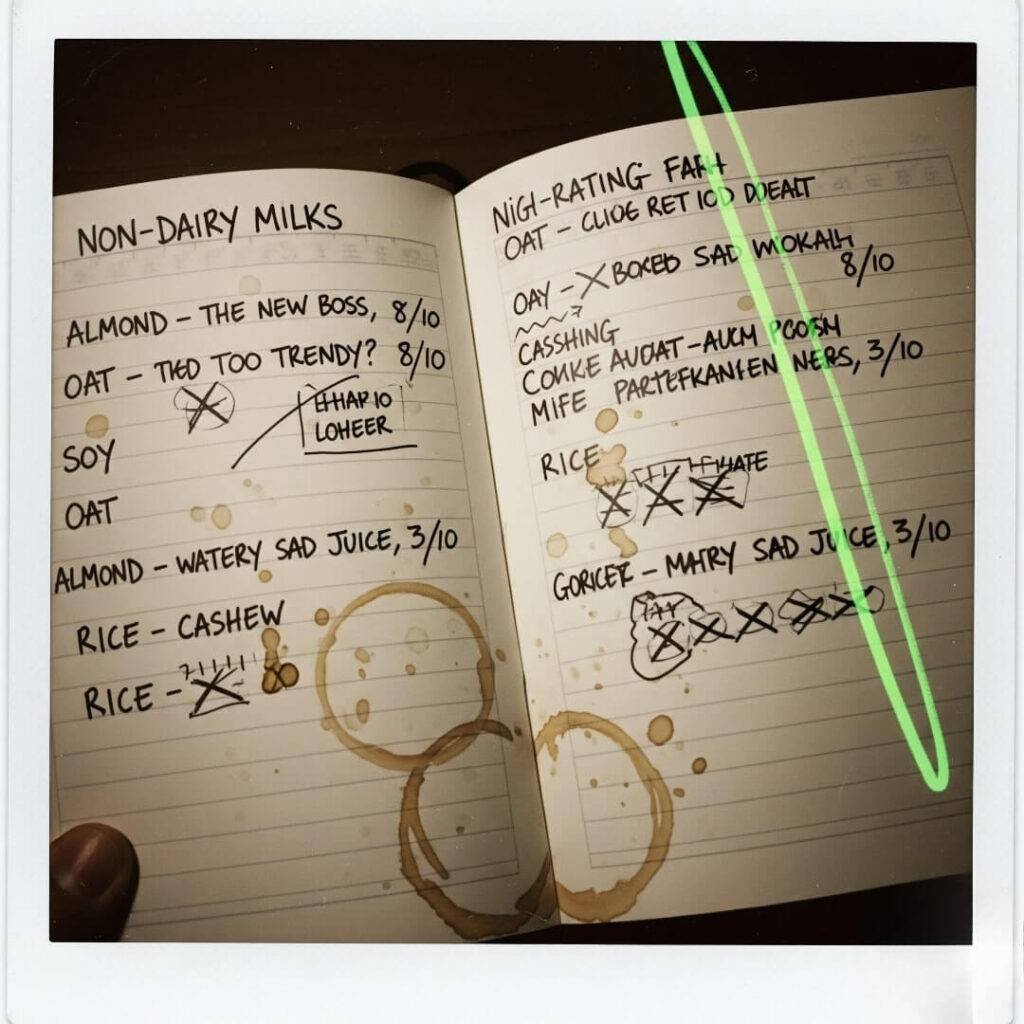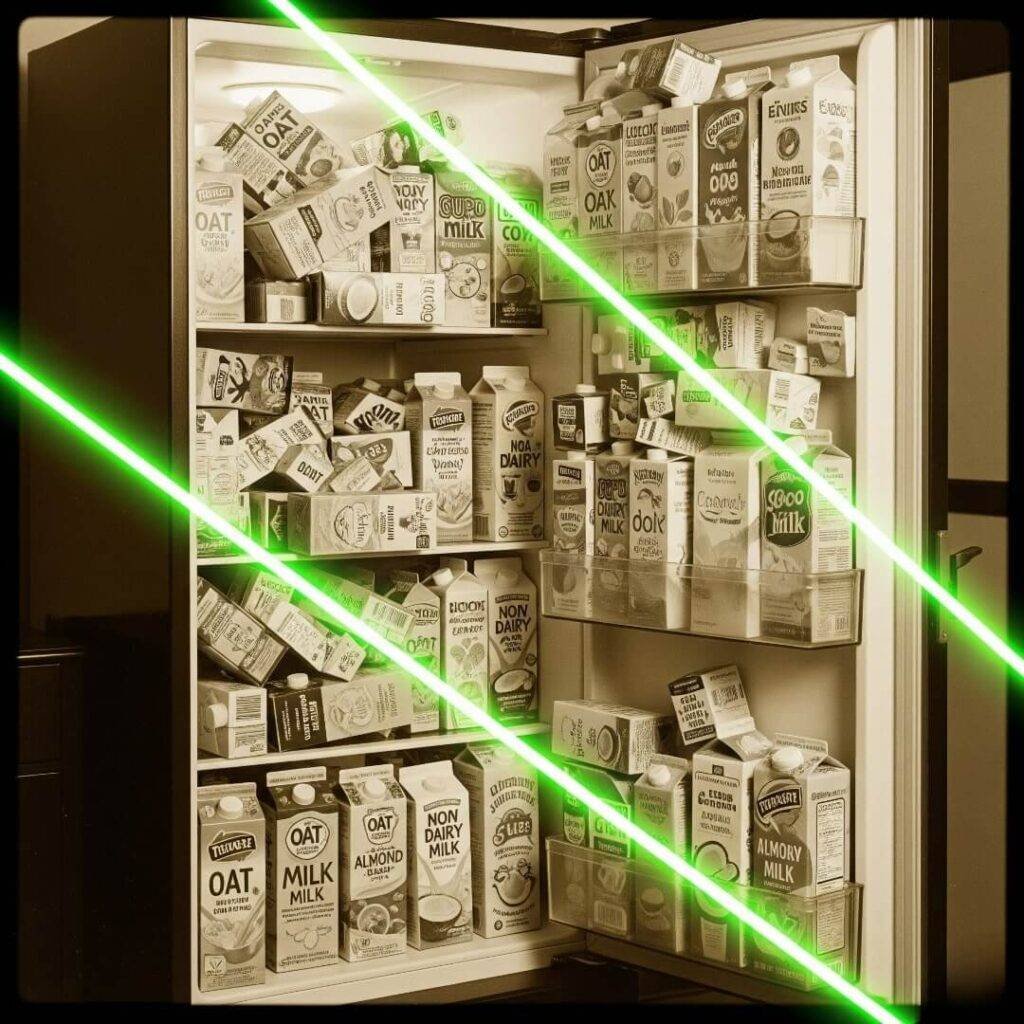So, I’m kinda obsessed with finding the best non-dairy milk alternatives, and it’s honestly a whole vibe. I’m typing this in my tiny Seattle apartment, surrounded by a mess of half-empty milk cartons and, like, way too many spoons from taste-testing. My cat, Muffin, is staring at me like I’m a total disaster, and I just noticed oat milk splattered on my laptop. Whoops. I’m spilling my messy, slightly embarrassing thoughts on which plant-based milks slap and which ones are basically watery regret. Let’s get into it, but don’t expect me to be perfect—I’m a mess.
Why I’m So Deep in Non-Dairy Milk Alternatives
Real talk, I went dairy-free after a super awkward moment at a coffee shop in Tacoma where my stomach basically threw a tantrum mid-order. The barista’s pity face? Burned into my brain. So, I started this quest for the best non-dairy milk alternatives, and it’s been wild. I’ve choked on gritty almond milk, fell hard for oat milk’s creamy goodness, and had a full-on crisis over coconut milk’s weird vibes. My fridge looks like a vegan milk explosion, and I’m here to share my unfiltered, slightly chaotic take.
How I Tested These (and Totally Screwed Up)
Okay, so I grabbed like eight non-dairy milks from Trader Joe’s—my wallet’s still mad at me. I tested for taste (sipping straight, in coffee, and cereal) and tried to care about nutrition like some wannabe health nut. Protein, calcium, sugar, all that jazz. I spilled soy milk on my phone during one test, and Muffin almost knocked over the cashew milk. Also, I might’ve mixed up my notes once, so if this seems off, blame my brain fog.

My Rankings of the Best Non-Dairy Milk Alternatives
Here’s my totally imperfect ranking of the best non-dairy milk alternatives, from “I’m in love” to “why did I do this?” It’s messy, it’s me, it’s real.
1. Oat Milk: My Creamy Ride-or-Die
Oat milk is hands-down the GOAT of non-dairy milk alternatives. It’s creamy, a lil sweet, and doesn’t taste like I’m drinking a tree branch (sorry, almond milk). I poured Oatly Barista into my coffee last week, and it frothed so good I felt like a pro—until I spilled it on my hoodie. Nutrition-wise, it’s got some fiber and calcium, but watch out for the sugar in flavored ones. I left a carton open in my fridge for like a week, and it was fine. Don’t judge.
- Taste: Like a warm oatmeal hug.
- Nutrition: Decent calcium, not much protein, sneaky sugars.
- Vibes: Makes my coffee feel bougie AF.
Outbound Link: Oatly’s nutrition deets for the nerds.
2. Soy Milk: The Reliable but Kinda Boring One
Soy milk’s like that friend who’s always there but never blows your mind. It’s a solid non-dairy milk alternative with, like, 7 grams of protein per cup, which is clutch for my sad protein shakes. I tried Silk Unsweetened in my Cheerios, and it was… fine? Kinda beany aftertaste. I tried frothing it for a latte once and turned my kitchen into a soy-scented sauna. My bad.
- Taste: Neutral, but that bean vibe lingers.
- Nutrition: Protein king, fortified with calcium and vitamin D.
- Vibes: Dependable, but don’t expect a party.
Outbound Link: Silk’s soy milk info if you’re curious.
3. Almond Milk: Hype Machine, Total Letdown
Almond milk’s the influencer of non-dairy milk alternatives—looks good, tastes meh. I got Almond Breeze Unsweetened, and it’s like drinking nut-flavored water. Low calories, sure, but barely any protein. I spilled some on my jeans yesterday, and it didn’t even stain, so… yay? It’s okay in smoothies, but don’t expect it to save your coffee.
- Taste: Thin, like it’s ghosting you.
- Nutrition: Low cal, but basically fancy water.
- Vibes: Instagram vibes, real-world flop.

4. Coconut Milk: The Weird Party Kid
Coconut milk is… a lot. It’s a non-dairy milk alternative that’s like, “Am I a drink or a dessert?” I tried So Delicious Unsweetened in my cereal, and it was like eating a tropical island. Too much for every day, but it’s creamy in coffee. It’s high-fat, which is cool if you’re keto, but my jeans are like, “Bruh, chill.” I tried baking with it once, and my muffins tasted like sunscreen. Whoops.
- Taste: Piña colada chaos, love or hate it.
- Nutrition: High fat, low protein, some calcium.
- Vibes: Party in a carton, use sparingly.
Outbound Link: So Delicious coconut milk facts for the curious.
Others I Tried (and Low-Key Regret)
- Cashew Milk: Too nutty, like I’m chewing a forest.
- Rice Milk: Sugary water. Why tho?
- Hemp Milk: Smells like my college dorm. Hard pass.
- Pea Milk: Sounds healthy, tastes like sadness.
Tips for Picking Your Non-Dairy Milk Alternative
Here’s what I learned from my milk mishaps:
- Start small. Buy little cartons first. I got a gallon of rice milk once. Big yikes.
- Check sugar. Unsweetened’s safer unless you want cereal soup.
- Frothing’s key. Barista blends are life for coffee nerds like me.
- Balance is everything. I got obsessed with protein and ended up with pea milk. Never again.

Wrapping Up My Milk Mess
So, there’s my sloppy take on the best non-dairy milk alternatives. Oat milk’s my soulmate, soy’s the reliable pal, and almond milk can stay in 2018. I’m still wiping milk off my counter, and Muffin’s judging me harder than ever. What’s your go-to plant-based milk? Drop it in the comments or DM me—I’m nosy! If you’re as extra as me, try your own taste test. It’s chaos, but it’s fun.



















































